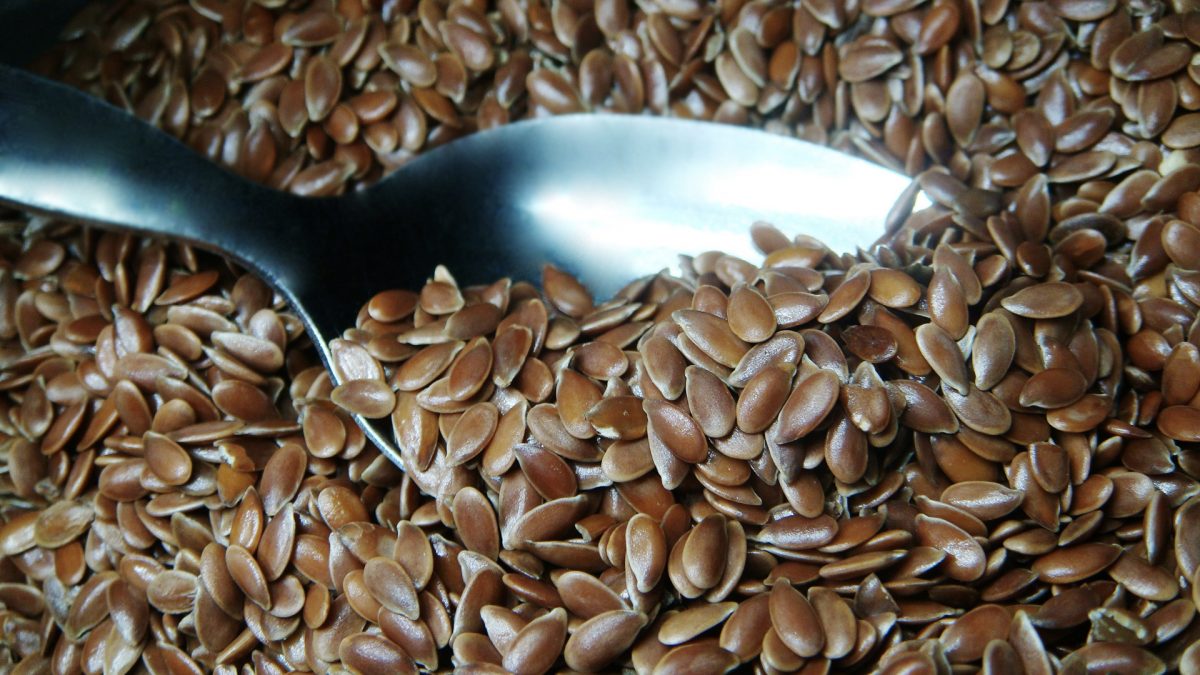According to two of perhaps the most credible nutrition authorities, the World Health Organization and the European Food Safety Authority, we should get at least half of a percent of our calories from the essential omega-3 fat ALA. That’s easy: Just have about one tablespoon a day of chia seeds or ground flaxseeds and you’re all set.
Our body can then take the short-chain ALA from our diet and elongate it into the long-chain omega-3s, EPA and DHA. The question, however, has long been whether our bodies can make enough EPA and DHA for optimal health. How would one determine that? Take fiber, for example. “A convincing body of literature showed an increased [heart disease] risk when diets were low in fiber,” so the Institute of Medicine came up with a recommendation for about 30 grams a day, which is an intake observed to protect against coronary heart disease and to reduce constipation. “Thus, just as [cardiovascular disease] was used to help establish an [adequate intake] for dietary fiber,” it was also used as a way to develop a recommendation for EPA and DHA, as I discuss in my video Should We Take EPA and DHA Omega-3 for Our Heart?.
With reviews published as late as 2009 suggesting fish oil capsules may help with heart disease, nutrition authorities recommended an additional 250 mg per day of preformed EPA and DHA, since, evidently, we were not making enough on our own if taking more helped. So, in addition to the one or two grams of ALA, it was suggested we should take 250 mg of preformed DHA/EPA, which can be gotten from fish or algae.
Fish is a tough one. On one hand, fish has preformed DHA and EPA, but, on the other hand, our oceans have become so polluted that seafood may also contain various pollutants, including dioxins, PCBs, pesticides like DDT, flame-retardant chemicals, and heavy metals, including mercury, lead, and cadmium, all of which can negatively affect human health. Dietary exposure to PCBs, for example, is associated with increased risk of stroke in general and an almost three times higher risk of hemorrhagic stroke. Unless you live next to a toxic waste dump, the major source of exposure to PCBs is fish consumption. Salmon may be the worst.
This may explain why studies in the United States have shown that just a single serving of fish a week may significantly increase one’s risk of diabetes, emphasizing that even levels of these pollutants once considered safe may “completely counteract the potential benefits of [the omega-3] fatty acids and other nutrients present in fish,” and lead to the type of metabolic disturbances that often precede type 2 diabetes. Now, one could get their daily 250 mg of preformed DHA/EPA from algae oil rather than fish oil. Algae oil is free of toxic contaminants because it is manufactured without pollutant exposure.
Then, one could get the best of both worlds: the beneficial nutrients without the harmful contaminants. However, it was demonstrated recently that these long-chain omega-3s don’t seem to help with preventing or treating heart disease after all. Since that was the main reason we thought people should get that extra 250 mg of preformed EPA and DHA, why do I still recommend following the guidelines in my Optimum Nutrition Recommendations? Because the recommendations were not just based on heart health, but brain health, as well. See my video Should We Take DHA Supplements to Boost Brain Function?.
Other omega-3 videos include:
- Fish Consumption and Suicide
- Omega-3s, Prostate Cancer, and Atrial Fibrillation
- Omega-3s and the Eskimo Fish Tale
- Should Vegans Take DHA to Preserve Brain Function?
- Which Are Better: Chia Seeds or Flax Seeds?
If the no-heart-benefit surprised you, check out Is Fish Oil Just Snake Oil?.
Surprised by the link with diabetes and want to learn more? See:
Food Sources of PCB Chemical Pollutants has more on PCBs, and here are additional videos on other pollutants:
- Dioxins in U.S. Farm-Raised Catfish
- Dietary Pollutants May Affect Testosterone Levels
- Flame Retardant Pollutants and Child Development
In health,
Michael Greger, M.D.
PS: If you haven’t yet, you can subscribe to my free videos here and watch my live, year-in-review presentations:
- 2012: Uprooting the Leading Causes of Death
- 2013: More Than an Apple a Day
- 2014: From Table to Able: Combating Disabling Diseases with Food
- 2015: Food as Medicine: Preventing and Treating the Most Dreaded Diseases with Diet
- 2016: How Not To Die: The Role of Diet in Preventing, Arresting, and Reversing Our Top 15 Killers
